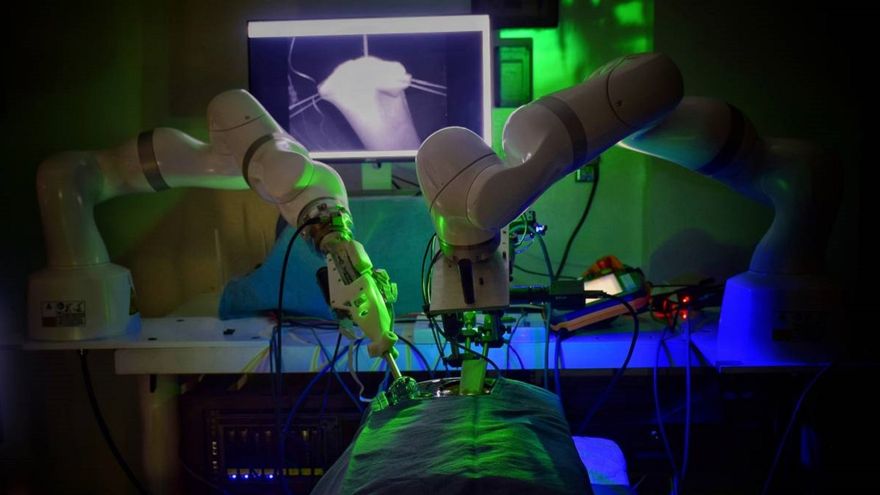A robot has executed one of the most complex and sensitive surgical procedures on a live pig: the reconnecting of two ends of an intestine. The successful intervention is a big step toward completely automated human surgery.
A team of researchers at Johns Hopkins University in the United States has developed an autonomous smart-tissue robot that can perform laparoscopic surgery on a pig without the assistance of a human. The astounding discovery, revealed in a recent paper published in the journal Science Robotics, could hasten the technological breakthroughs required to undertake fully automated human surgeries.
According to a press statement, the robot performed exceptionally well when suturing two ends of the intestine, a notoriously difficult task in abdominal surgery. Star, the robot, completed the procedure on four live animals, achieving much better results than humans conducting the same surgery.
Maximum accuracy during surgery
The researchers, lead by Axel Krieger and Hamed Saeidi, stated that the robot performed an intestinal anastomosis, a surgery that requires a high level of precision and involves multiple repetitive movements. In 2016, the same robot was successful in reconstructing a pig’s intestines with precision, but it required more human assistance.
Connecting two ends of an intestine in gastrointestinal surgery is a particularly difficult procedure, according to specialists, because the surgeon must suture with greatest accuracy and consistency. This procedure is so critical that even a minor tremor in the hand or a missed stitch might result in major difficulties for the patient. The surgeons added additional functions to the robot to improve surgical autonomy and precision.
They incorporated specialised suturing tools and cutting-edge imaging technologies, for example, so that the robot may guide itself autonomously with more accurate renderings of the operative field. It’s worth emphasising that Star’s surgery is especially difficult for robots because their unpredictability drives them to react rapidly and overcome unanticipated challenges.
Adaptability
A revolutionary control system that can adjust the surgical plan in real time, just like a human surgeon, is one of the elements that mark the evolution of the robot. As a result, it is able to combine robotic precision with human brain adaptability. Without a doubt, this technological advancement has enabled Star to become the first robotic system to successfully plan and carry out sophisticated surgery with minimum human participation.
For the full article, please visit Diario de Ibiza website here.

